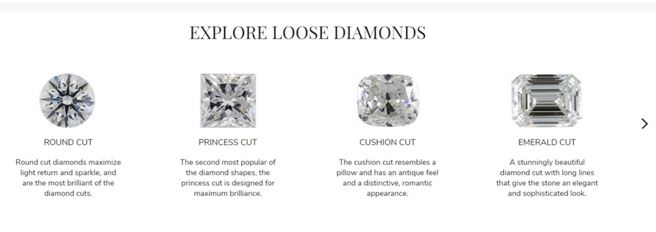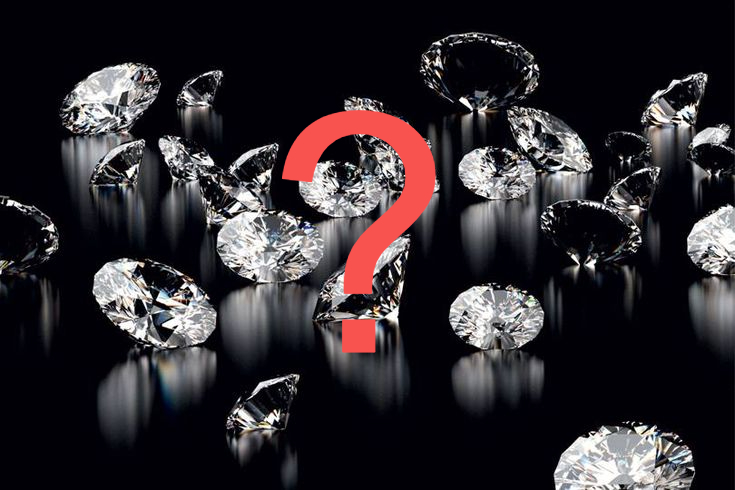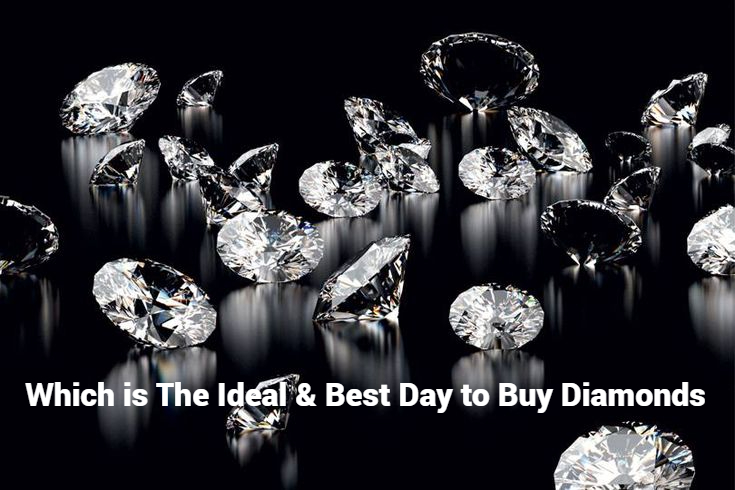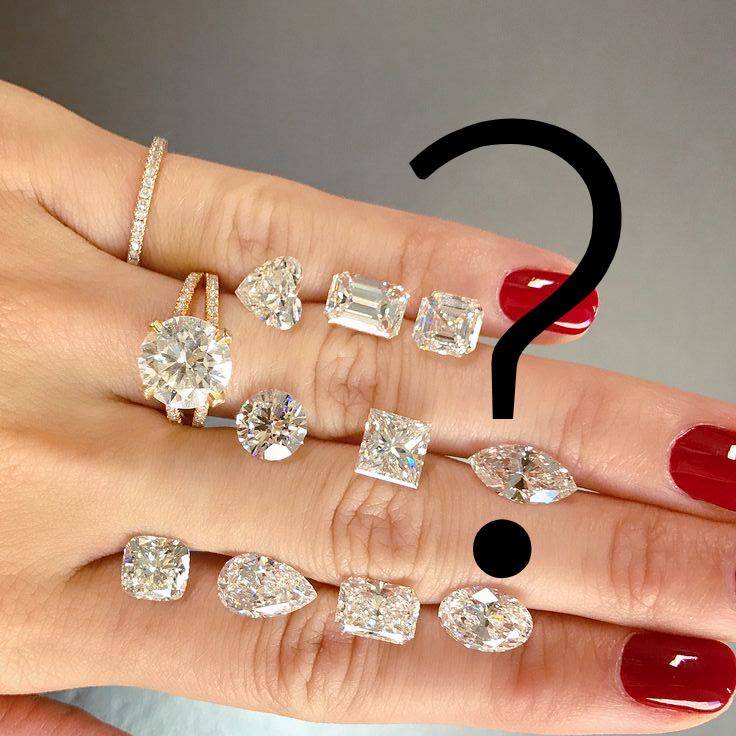The concept of diamond fluorescence is not very clear to so many people. Therefore, this article aims to demystify the concept of diamond fluorescence. By the time you are done the reading, you would be a diamond fluorescence expert!
The following summarizes what we discuss:
- Diamond fluorescence is a phenomenon in which diamonds emit a glow when exposed to ultraviolet light. It is caused by the presence of trace elements in the diamond structure.
- It affects about 25 – 30% of all diamonds
- According to the GIA, diamonds can be put into the following categories based on fluorescence:
- None: No emission when exposed to UV light
- Faint: Diamonds emit a soft blue glow when exposed to UV light
- Medium: Diamonds would emit a light blue glow when exposed to UV light
- Strong: Diamonds emit a deep blue glow upon UV light exposure
- Very strong: Diamonds would emit a bright blue glow when exposed to UV light.
- Factors to consider when picking a diamond with fluorescence include:
- The other 4Cs: How well the diamond fares with respect to them
- The degree of fluorescence
- The amount of time spent in the dark and UV lighted areas.
- Your budget
- Preference
- Advantages of Diamond fluorescence
- It can mask color in lower color grades
- It increases the value of lower color grade diamonds
- It reduces the price of higher-grade diamonds (favorable to the buyer)
- It provides variety in diamond selection
- Disadvantages
- It decreases the value of higher grade diamonds (unfavorable to the seller)
- It can lead to over grading of lower color grade diamonds
- It can affect the appearance of the diamond
- The so-called masking effect is not always there
- The fluorescence may be due to a defect or impurity
- Diamond fluorescence may or may not affect the price of the diamond depending on the grade of the diamond and how strong the fluorescence is.

Now, we move to the article proper!
When Ultraviolet light falls on some objects, these objects would emit a certain type of glow. This type of glow is absent when the ultraviolet light is removed and reappears when UV light is introduced. This phenomenon is known as fluorescence.
Diamond fluorescence is a phenomenon that happens when diamonds are exposed to UV light. The UV light can be from the rays of the sun or from fluorescence lamps or UV lighting in public places. The rays that are emitted from diamonds have been observed to be usually blue in color. On rare occasions, the glow is orange or yellow in color.
What really happens is that the diamond absorbs the radiation, which is in the ultraviolet spectrum. The absorbed light excites some of the molecules in the diamond and then it emits some radiation which is now in the spectrum of visible light, which the eyes can see.
This fluorescence is found to be as a result of the inclusion of some trace elements in the carbon structure of the diamond in its crystallization process. Diamond fluorescence is commonly associated with the presence of Nitrogen atoms that are arranged in a specific pattern within the carbon crystal structure.
This phenomenon is not observed in all diamonds. Rather, it is observed in only about 25 – 30% of all diamonds, according to the GIA.
Experiments have shown that the fluorescence that is produced by UV light also depends on the distance. When the light source is close to the diamond, then the fluorescence is stronger. When it is far from the diamond, the fluorescence is weaker or altogether absent. This would affect your choice as we would see later on.
IS DIAMOND FLUORESCENCE GOOD OR BAD?
No doubt, the question on most people’s minds about fluorescence is if it is good or bad and how it affects the pricing and overall quality of their diamond.
The answer to that question could be Yes or No, depending on the amount of fluorescence and the grade of the diamond.
However, the GIA, based on a study taken in 1997, has found that the fluorescence of a diamond does not really have any effect on the appearance or color of a diamond, especially when the diamond is viewed with the table down. When the table is up, diamonds with strong or very strong fluorescence would be more obvious. It was always observed that I – K color grade showed more fluorescence than others.
ADVANTAGES OF DIAMOND FLUORESCENCE
- It can mask color: The blue glow emitted by a fluorescing diamond can be strong enough to mask the yellow color of a diamond with a lower color grade. This masking effect is seen very commonly when the diamond belongs to the J –M color grade. This effect makes the diamond look more appealing and have better performance.
- It increases the value of the diamond: In diamonds with a lower color grade, the presence of fluorescence can increase the value and make the price go higher since it would look better and have better performance than a color of the same grade with no fluorescence.
- It helps to get more for less: If you do not mind the hazy appearance that strong fluorescence gives to diamonds with higher color grades, then you can absolutely get as much as 15% discount on any diamond. The diamond would still retain all of the characteristics of the cut, clarity, and carat. As a matter of fact, the hazy appearance might not even be so noticeable. It might go unnoticed when there is a large distance between the light source and the diamond. This means that if you do not work in an environment with UV lights, you can still wear your diamond without an iota of fluorescence if it is unwanted.
- It gives variety: Some people would just love the fact that a diamond would glow when UV light is placed on it. That feature is unique on its own and would always make the diamond stand out. This option increases the preferred range for customers and that in itself is a very good thing.
DISADVANTAGES
- It can decrease the value of the diamond: As much as diamond fluorescence would increase the value of lower grade diamonds, it would decrease the value of higher color grade diamonds too! This is evidenced by the required 15% cut in the price of a higher color grade diamond with strong fluorescence. To the seller, that is surely not something to laugh about, 15% is a whole lot!
- It can lead to over grading of color in fluorescent diamonds: Usually, color grading is carried out in lit environments that might contain some form of ultraviolet radiation. Well, as you might have guessed, the color of the diamond would most likely be affected. A lower grade color might actually have its true color masked by the blue glow due to fluorescence. This means that customers could be misled and go on to purchase a diamond that is actually a grade lower than is on the report. To the customer, this means that more is being paid for less and might lead to dissatisfaction.
- It can affect the appearance: In some diamonds, especially those higher up the color grade scale, strong or very strong fluorescence can create a hazy or cloudy appearance of the diamond. This would affect the visual appeal and transparency of the diamond. The grayish tinge that is conferred on the diamond by fluorescence can make the diamond appear duller than one of the same color grades without fluorescence.
- The masking effect depends on distance: Even though diamond fluorescence has been largely celebrated because of the masking effect for lower color grades of diamonds, this effect depends on the distance. Generally, fluorescence depends on the distance to the light source. The more the distance from the UV light, the poorer the fluorescence. This implies that the masking effect so-called, would only be visible when the diamond is in close contact with UV sources, or else it would look worse than one of the same color grade!
- The fluorescence can be caused by a defect or impurity: Since we have said that the presence of trace elements can actually be the reason for fluorescence, some people believe that fluorescence is due to a ‘defect’ or ‘impurity’ in the diamond and that the clarity grade should be lower. This school of thought has even gone on to say that there is not much difference between a diamond with a lower color grade, and a diamond that has strong or very strong fluorescence, after all, they are both caused by the presence of ‘impurities’ in their crystal lattice structure.
GRADING FLUORESCENCE
To better understand this unique phenomenon, the GIA has put together a grading scale for diamond fluorescence. It is important to note that diamond fluorescence affects the physical appearance of only about 1% of diamonds. The categories are:
- NONE: As the name implies, diamonds in this group have no fluorescence whatsoever. Whenever they are exposed to UV light, there is no glow observed. These diamonds are usually desired by most buyers and as a result, have a higher value. Most diamonds also fall into this category.
- FAINT: Diamonds with this degree of fluorescence emit a soft blue glow whenever they are exposed to Ultraviolet light. The blue glow is not strong enough to impact the appearance of the diamond. The price is also unaffected as diamonds in this category are the same price as those without any form of fluorescence.
- MEDIUM: Diamonds in this category would emit a light blue glow anytime they are exposed to UV light. The glow is quite visible and would have a little effect on the appearance of the diamond. For color grades between J and M, the color is improved when there is fluorescence.
- STRONG: Diamonds with a strong degree of fluorescence would emit a deep blue glow whenever they are exposed to UV light. This glow is obvious and can have positive or negative effects. For diamonds with lower color grades like J, K, L, the deep clue color tends to improve the appearance and color of the diamond. But when the diamond is a colorless diamond-like the D –F range, strong diamond fluorescence would affect the appearance of the diamond because it does not have enough color to offset the effect of the fluorescence. As a result, the diamond can appear grayish or hazy, instead of the colorless and clear appearance that diamonds in this grade are known for.
- VERY STRONG: This is the highest grade of diamond fluorescence and is characterized by a bright blue glow that is clearly visible. This degree of fluorescence can affect the visual appearance of a diamond. Its effects are more obvious in diamonds which are colorless and clear, for instance in the D – F color grade. It can cause the diamond to appear hazy and grayish.
Based on this classification, it is obvious that the degree to which a diamond is affected by fluorescence is dependent on other factors like the color and clarity grade. Diamonds with lower color grades would benefit from higher degrees of fluorescence, while those with higher clarity and color grading, would do well with little or no degree of fluorescence.
EFFECT OF FLUORESCENCE ON PRICE
All of the grading and talk about fluorescence would surely have no meaning if it did not affect the value and price of the diamond in any way.
As we have discussed earlier, the fluorescence of a diamond does not affect its visual appeal, sparkle, and quality in most cases. Therefore, the prices in most cases are not different.
However, in the few cases where diamond fluorescence is obvious, diamond sellers usually offer a 10 – 15% discount on the price of the diamond. This is because the diamond might look a grade lower in color, due to fluorescence.
Fluorescence does not also have any effect on the structural integrity of the diamond. So, the durability of the diamond is preserved no matter the fluorescence.
The decision on whether to buy a diamond with None, Medium or strong degree of fluorescence rests on the customer’s preferences. Some might prefer the presence of strong fluorescence while some do not want it obvious. You can also consider how the diamond looks like in natural and artificial lighting, and the setting the diamond is to be used in.
OTHER FACTORS TO CONSIDER
When buying a diamond with fluorescence, the following are factors to be also considered:
- The 4Cs: The 4 Cs namely cut, color, clarity, carat are the major determinants of the features of a diamond. Once these are in place, then we can begin to speak about diamond fluorescence. No amount of presence or absence of fluorescence can make a badly cut diamond look better. The color and clarity of a diamond would also determine the degree to which fluorescence can be tolerated. Higher color and clarity grades are not usually affected negatively by a strong or very strong fluorescence grade. While the reverse is true for lower color or clarity grades. Larger diamonds also would emit more radiation than smaller diamonds. Therefore, the decision must be holistic and put the 4 Cs together.
- The degree of fluorescence. After considering the diamond 4Cs, the degree of fluorescence should match their quality. Generally, strong and very strong fluorescence appears hazy. The medium might appear slightly hazy. Faint and None degree of fluorescence does not appear hazy. None or faint should be chosen for higher color and clarity grades, G and above. Medium is recommended for J and K and below.
- The amount of time spent in the dark: Most of the time, this glow would not be observed except in dark rooms when UV light is deliberately exposed. If the use of the diamond is mostly outdoors, the fluorescence might not be visible to most people. However, if the diamond would be indoors, under artificial or UV lights or rooms that would allow the fluorescence to be obvious, then the fluorescence would be more visible.
- Budget: As we saw earlier, when there is some degree of fluorescence, especially in high cut grades and quality diamonds, a discount of up to 15% is usually given. If you do not mind the fluorescence, you can get a high grade cut for a price that is lower than its usual value. If your budget is for the lower grades, you can also choose to get those with fluorescence, because the glow would enhance their appearance.
- Preference: This is a very important factor in the purchase of diamonds that fluoresce. Some buyers might be comfortable with a colorless diamond with a hazy look and fluorescence. Some might not. Others might love to have a lower color grade with fluorescence. The preference of the buyer would always have an effect on choice. As a matter of fact, matters on diamond fluorescence are usually regarded as subjective.


